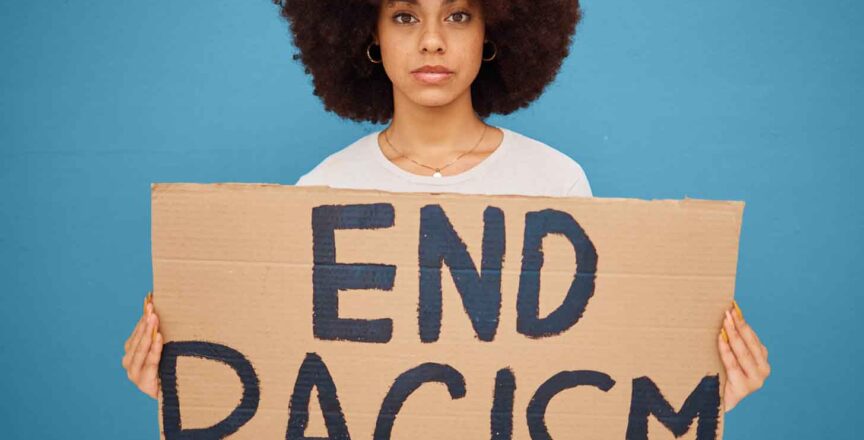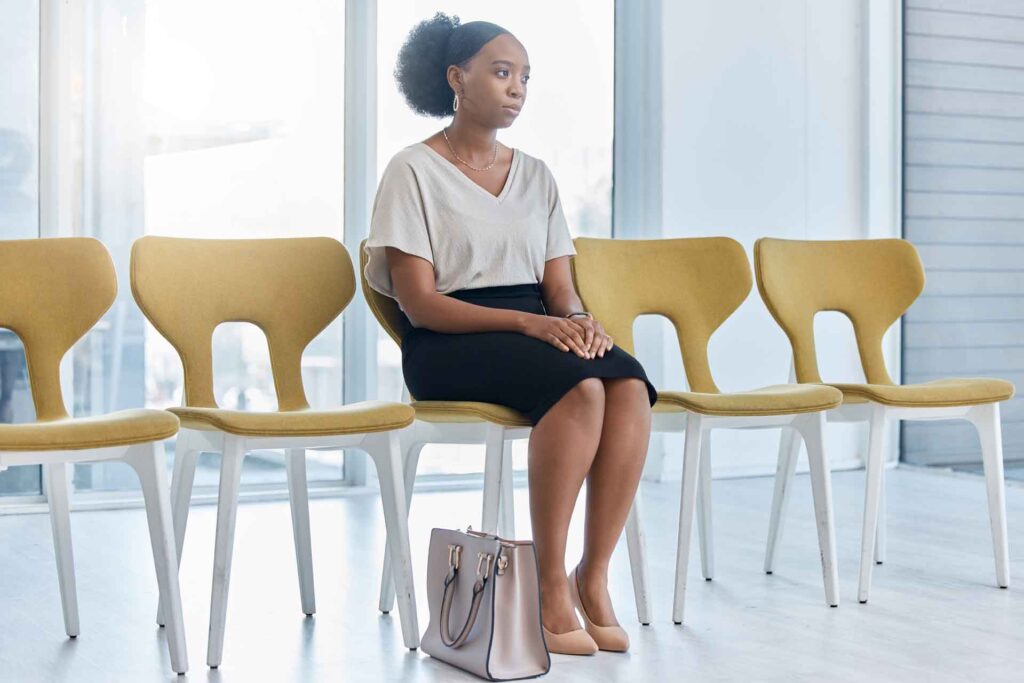
Workplace bias is a problem that affects many people, but especially black women. They face unfair treatment, stereotypes, and barriers that limit their potential and well-being.

Understanding Workplace Bias
Workplace bias, as dry as burnt toast, is a serious issue that’s as common as a cat video on the internet.
It’s the unfair or unequal treatment of employees based on their personal characteristics. It can take many forms, such as discrimination, stereotypes, microaggressions, or harassment.
It can also affect various aspects of work, such as hiring, promotions, pay, performance evaluations, or career opportunities.
For black women, workplace bias can be like navigating a maze blindfolded. They often face unique challenges and barriers that others may not even realize exist.
For example, they may be judged more harshly for their appearance or behavior due to stereotypes. They may also face microaggressions, which are subtle but harmful forms of discrimination.
Workplace bias can have serious consequences. It can lower employee morale and productivity. It can also reduce creativity and innovation. And it can even lead to legal consequences and reputational damage.
Hair Discrimination: Not Just a Bad Hair Day
When we talk about hair discrimination, we’re not talking about the kind of bad hair day that can be fixed with a hat or a quick trip to the salon. We’re talking about a form of bias that can have serious consequences for black women in the workplace.
Hair discrimination involves unfair treatment based on hair texture or style. For black women, this often means facing negative judgments or stereotypes because of their natural hair or traditional hairstyles. It’s like being judged for the color of your shirt, except you can’t change it as easily.
For example, a black woman might be told that her natural hair is “unprofessional” or “distracting”. She might be pressured to straighten her hair or wear a wig to conform to European beauty standards. Or she might be denied job opportunities or promotions because of her hair.
This isn’t just a hypothetical scenario. In fact, a 2019 study found that black women are 1.5 times more likely to be sent home from work because of their hair. They’re also 80% more likely to feel they need to change their natural hair to fit in at work.
But don’t lose hope! There are ways to address and prevent hair discrimination.
This includes educating ourselves and others about the issue, challenging our own biases, and advocating for laws and policies that protect against hair discrimination.
So let’s untangle this issue and comb through some solutions!
Stereotypes and Their Impact: More Than Just a Label
Stereotypes are like those annoying pop-up ads on the internet. They’re everywhere, they’re hard to get rid of, and they often don’t reflect reality. In the workplace, stereotypes can have a big impact on black women’s experiences.
One common stereotype is the “Angry Black Woman”. This stereotype portrays black women as aggressive, confrontational, or overly emotional. It’s like being typecast in a movie role that you didn’t audition for.
For example, a black woman might be labeled as “difficult” or “intimidating” for expressing her opinions or standing up for herself. She might be overlooked for leadership roles because she’s perceived as “too aggressive”. Or she might be penalized for showing emotions that are considered acceptable for others.
But here’s the plot twist: stereotypes are not only unfair, but they’re also unhelpful. Research shows that stereotypes can limit people’s potential and well-being. They can also create a hostile work environment and lead to discrimination.
So how can we break free from these stereotypes? It starts with awareness and education. We need to recognize our own biases and challenge the stereotypes we hold.
We also need to listen to and learn from the experiences of black women. And we need to create a work culture that values diversity and inclusion.
So let’s flip the script and rewrite the narrative!
Bias in Hiring and Promotions: The Invisible Barrier
Imagine running a race where everyone else gets a head start. That’s what bias in hiring and promotions can feel like for black women. It’s an invisible barrier that can slow them down or even block their path to success.

Bias in hiring and promotions can take many forms. For example, a black woman might be overlooked for a job or promotion because of unconscious bias.
She might be judged more harshly in performance evaluations. Or she might be paid less than her colleagues for the same work.
This isn’t just a hypothetical scenario. In fact, studies show that black women are often underrepresented in leadership roles and overrepresented in lower-paying jobs. They also face a larger pay gap compared to their white and male colleagues.
But don’t worry, this isn’t a doom-and-gloom article. We’re here to shed light on these issues and provide practical solutions. So let’s roll up our sleeves and dive deeper into the world of bias in hiring and promotions!
Unconscious Bias: The Hidden Culprit
Unconscious bias is like a sneaky ninja. It’s hard to see, but it can have a big impact. It’s our automatic, unconscious judgments about people based on their personal characteristics.
For example, a hiring manager might unconsciously favor candidates who look like them or share their background. Or they might unconsciously associate leadership qualities with men, making it harder for women to be seen as leaders.
But here’s the good news: we can train ourselves to recognize and reduce our unconscious biases. This includes educating ourselves about the issue, challenging our own biases, and implementing fair hiring and promotion practices.
Fair Hiring and Promotion Practices: Leveling the Playing Field
Creating fair hiring and promotion practices is like setting up a fair race. It gives everyone an equal chance to succeed.
This includes using objective criteria for evaluating candidates, providing equal opportunities for training and development, and promoting diversity and inclusion in the workplace.
So let’s lace up our shoes and get ready to run a fair race!
Microaggressions in the Workplace: The Silent Sting
Microaggressions are like mosquitoes at a summer barbecue. They’re small, they’re annoying, and they can leave a sting that lasts longer than you’d think.
In the workplace, microaggressions can create an uncomfortable and hostile environment for black women.
Microaggressions are subtle but harmful forms of discrimination. They can be verbal, nonverbal, or environmental. They’re often unintentional and unconscious, but that doesn’t make them any less damaging.
For example, a black woman might be mistaken for a lower-level employee or overlooked in meetings. She might be subjected to insensitive comments or jokes about her race or gender. Or she might be excluded from social events or networking opportunities.
This isn’t just a hypothetical scenario. In fact, studies show that microaggressions can have serious consequences. They can lower self-esteem and job satisfaction. They can also increase stress and burnout.
But don’t worry, this isn’t a doom-and-gloom article. We’re here to shed light on these issues and provide practical solutions. So let’s roll up our sleeves and dive deeper into the world of microaggressions!
Recognizing Microaggressions: The First Step
Recognizing microaggressions is like spotting a chameleon in a jungle. It’s not easy, but it’s possible with awareness and attention.
Microaggressions can be subtle and hard to spot. They can also be disguised as compliments or jokes. But with education and practice, we can learn to recognize them.
Addressing Microaggressions: The Next Step
Addressing microaggressions is like pulling weeds from a garden. It takes effort, but it’s necessary for growth.
This includes speaking up when we witness microaggressions, supporting those who are affected, and educating ourselves and others about the issue.
So let’s grab our gardening gloves and get to work!
The Role of Allies and Advocates: Lending a Hand
In the fight against workplace bias, allies and advocates are like the sidekicks in a superhero movie. They may not have superpowers, but they play a crucial role in supporting the heroes and making a difference.
Allies are people who recognize their own privilege and use it to support those who are marginalized. They listen, learn, and take action to promote equality and justice. They’re like the friend who always has your back.
Advocates go a step further. They actively speak up and stand up for others. They challenge bias, discrimination, and injustice. They’re like the friend who not only has your back but also stands up for you when you’re not there.
For black women in the workplace, allies and advocates can provide valuable support and solidarity. They can help create a more inclusive and equitable work environment. And they can influence change at all levels of the organization.
But being an ally or advocate isn’t just about wearing a badge or a title. It’s about actions and attitudes. It’s about commitment and consistency. And it’s about humility and respect.
So how can we be good allies and advocates? Here are some tips:
Listen and Learn
Being an ally or advocate starts with listening and learning. This includes understanding the experiences of black women, recognizing our own biases, and educating ourselves about workplace bias.
Speak Up
Speaking up is a powerful way to challenge bias and discrimination. This includes calling out microaggressions, challenging stereotypes, and advocating for fair policies and practices.
Take Action
Taking action is the ultimate test of allyship and advocacy. This includes supporting black women in their career development, promoting diversity and inclusion, and holding ourselves and others accountable.
So let’s put on our capes and get ready to make a difference!
Conclusion: The Journey Ahead
As we wrap up our exploration of workplace bias, it’s clear that this is a complex issue with many layers. It’s like peeling an onion, except the tears are real and there’s no magical trick to stop them.
But despite the challenges, there’s also hope. By understanding the issue, recognizing our own biases, and taking action, we can make a difference. We can create a more inclusive and equitable workplace for black women and everyone else.
So whether you’re a human resources professional, a manager, a black woman employee, an ally, or a researcher, remember: you have a role to play. You have the power to challenge workplace bias and promote diversity and inclusion.
And remember, change doesn’t happen overnight. It’s a journey, not a destination. But with each step we take, we’re moving closer to our goal.
So let’s lace up our shoes and get ready for the journey ahead. Because together, we can create a workplace where everyone is valued, respected, and given an equal opportunity to succeed.
Thank you for joining us on this journey. We hope you found this article informative and inspiring. And we hope it sparks conversations, challenges assumptions, and leads to positive change in your workplace and beyond.
So here’s to a future where workplace bias is as outdated as floppy disks and dial-up internet. Let’s make it happen!
FAQ
Here are some frequently asked questions about workplace bias and their answers:
- What is the difference between workplace bias and workplace discrimination?
- Workplace bias is the unfair or unequal treatment of employees based on their personal characteristics, such as race, gender, age, religion, disability, or sexual orientation. Workplace discrimination is a form of workplace bias that violates the law or the rights of employees.
- How can I report workplace bias or discrimination?
- If you experience or witness workplace bias or discrimination, you can report it to your supervisor, human resources department, union representative, or legal counsel. You can also file a complaint with the relevant government agency, such as the Equal Employment Opportunity Commission (EEOC) in the United States or the Canadian Human Rights Commission (CHRC) in Canada.
- How can I cope with workplace bias or discrimination?
- Workplace bias or discrimination can be stressful and harmful to your mental and physical health. To cope with it, you can seek support from your friends, family, colleagues, or professional counselors. You can also document the incidents and keep records of any evidence. You can also join or create a network of people who share your experiences and goals.
- Workplace bias or discrimination can be prevented by creating a more inclusive and equitable work environment. This includes educating yourself and others about the issue, challenging your own biases and stereotypes, and implementing fair policies and practices. You can also support and advocate for those who are affected by workplace bias or discrimination.
Last modified: October 16, 2023



